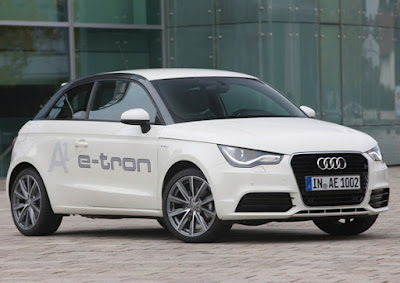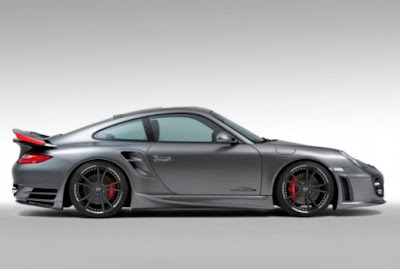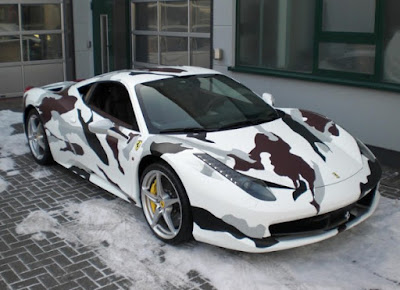Sunday, October 31, 2010
Weekly Rant: Missing Links
It’s not unusual for me to be irritated by reviews of Clint Eastwood films. I’ve said it several times now, though perhaps never within the main body of a post here at this blog, that I think Eastwood is the most coddled of directors. Even when his films mostly work, they have a habit of being repetitive, hokey and repulsively on-the-nose, and yet somehow critics rarely give Eastwood’s errors more than a perfunctory aside, usually on the way to another compliment. Even in the case of the sloppy and lackluster Hereafter, which despite some worshipful outliers has been significantly criticized, most of the disdain has been reserved for the screenwriter, Peter Morgan. Rightfully so, in this case, but the larger point still remains: Eastwood gets away with stuff that gets George Lucas and M. Night Shyamalan drawn and quartered.
But this week’s rant isn’t about Eastwood or the kid gloves treatment he tends to receive from critics. It’s about another troublesome trend that I noticed when reading reviews of Hereafter: the tendency to (hyper)link that film to Paul Haggis’ Crash and Alejandro Gonzalez Inarritu’s Babel. The comparison is by no means out of bounds. Not entirely. All three films feature characters who begin the film unlinked only to have their plot lines overlap by movie’s end, sometimes in (supposedly) profound ways. In an effort to describe that basic phenomenon, it’s a fitting comparison. Trouble is, those so called “hyperlink narratives” are more unalike than they are similar, and observing them as part of one niche genre threatens to obscure what these films are really about, what they’re trying to do.
Allow me to explain …
Haggis’ Crash is specifically about interconnectivity and the Domino effect of prejudice, fear and hate. As such, it’s a film that’s essentially meaningless if the characters are unlinked, because it’s only in tying these characters together that Haggis can explore (in his very heavy-handed manner) how people carry past experiences into future interactions. The film’s thesis is that we are connected in ways that we cannot avoid and that only by reaching out to one another – by linking – can we see people for who they really are. And it’s by making the film’s characters victims and perpetrators of prejudice that Haggis conveys the cyclical nature of fear and hate. In Crash, these links aren’t just narrative devices linking these stories, they are a core component the story's theme.
Inarritu’s Babel is different. It’s about universality, not interconnectivity – and those aren’t quite the same. Sure, like Crash, its characters are connected: a Japanese businessman sells a rifle to his hunting guide in Africa, who in turn sells it to a poor Moroccan goat herder, who gives the gun to his sons, who shoots at a tour bus and wounds an American tourist, who because of her wound doesn’t get back home to the United States in time to relieve her live-in maid and child caretaker, who thus takes the American children with her to Mexico to attend the wedding of her son. But, unlike Crash, the narrative chain linking these characters together is simply a decorative ribbon that neatly binds the film’s disparate chapters. Babel, unlike Crash, is not about a Domino effect. In truth, its stories don’t need to be linked by narrative because they are already linked by theme: the frustrating isolation that comes from our cultural or linguistic differences. To suggest that Babel is about that small and insubstantial narrative thread is to suggest that the film is exploring the trickle-down dangers of selling a weapon after a hunting expedition. Or, it's to suggest that Babel is about is about its segues, which would be akin to focusing more on the dissolves between scenes than on the scenes themselves. Babel and Crash are both hyperlink films, sure, but they have entirely different reasons for using that design.
And that brings us to Eastwood’s Hereafter, which falls somewhere between those two films. For most of its running time, Hereafter isn’t a movie about the interconnectivity of Matt Damon’s George (in America), Cecile De France’s Marie (in France) and Frankie McLaren’s Marcus (in England), and so in that sense there’s no meaning to be found in the way the characters ultimately influence one another. Then again, by the end of its awkward final act, Hereafter becomes a love story, which of course makes the joining of at least two of the characters greatly meaningful. That I can’t tell whether Hereafter intends to assign significance to these links (like Crash) or simply joins these characters in order to decorate its deeper thematic examinations (like Babel) says everything about the film’s frustrating indefiniteness.
But this isn’t a review of Hereafter, it’s a warning about the dangerousness of connecting films too casually. I understand why people spot general structural similarities among Crash, Babel and Hereafter, but those similarities are just that: general and structural. In theme and intent, these "hyperlink films" are quite different. In that sense, grouping these films is as misleading as it is instructive. One of the films is specifically about interconnectivity. One of them is about universality. And the other one is about, well, you tell me.
Saturday, October 30, 2010
2011 Dodge Viper SRT10
The Viper has hissed its last. But before the ageing supercar is consigned to the history books later this year, it will shed its skin one last time with a limited run of 50 Final Edition models.
Only available in the US, buyers will have the choice of conventional Coupe or Roadster models. But for the ultimate Viper experience, the Coupe-based ACR (American Club Racer) version with its huge rear wing and lighter kerbweight will be the enthusiasts’ choice.
Each Final Edition Viper features a graphite-coloured clear-coated paint finish with a black centre stripe highlighted in red. The Coupe and Roadster models feature Anthracite-coloured six-spoke alloys while the ACR version has black, five-spoke items. All Final Edition models have unique side sill badges.
The interior has been treated to black leather with red stitching, red painted dial surrounds on the instrument cluster and bright stainless steel screws on the centre console. A numbered dash plaque and unique Viper Final Edition floor mats complete the changes.
All models are powered by the enormous 603bhp 8.4-litre V10 engine, ensuring sensational performance. The 0-60mph sprint takes less than 4.0 seconds, while top speed is 202mph. The braking power is equally staggering, with 0-100-0 mph taking just 11 seconds.
Production of the Final Edition models will begin in early summer, with 20 Coupes, 18 Roadsters and 12 ACRs due to be made. That figure is considerably less than the 360 red and white Final Edition coupes that heralded the departure of the previous generation Dodge Viper in 2002
Senner Audi A5 Cabrio
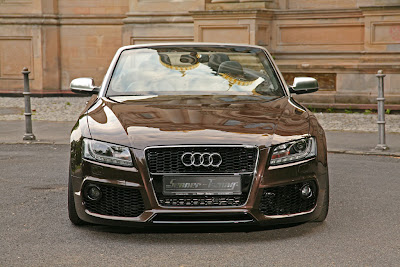
Senner Audi A5 Cabrio
 Senner Audi A5 Cabrio
Senner Audi A5 Cabrio Senner Audi A5 Cabrio
Senner Audi A5 Cabrio
 Senner Audi A5 Cabrio
Senner Audi A5 Cabrio Senner Audi A5 Cabrio
Senner Audi A5 Cabrio
Senner Audi A5 Cabrio
 Senner Audi A5 Cabrio
Senner Audi A5 Cabrio Senner Audi A5 Cabrio
Senner Audi A5 CabrioThe tuners from have unveiled over the weekend their Audi A5 Cabrio upgrade program, which offers increased performance and a number of body work updates. The Senner Audi A5 Cabrio for the 2.0 TFSI model offers a power increase to 275 HP and 430 Nm of torque. The extra umpf of the Senner Audi A5 Cabrio 2.0 TFSI comes from updated engine electronics and new sport air filters. The Senner Audi A5 Cabrio also features a Power Convertor system that manages to offer even faster reaction times of the accelerator pedal. Although the tuner doesn't mention, we bet the new stainless steel exhaust system with four 88x74mm diameter tailpipes also gives a few extra horses to the Senner Audi A5 Cabrio.
The tuner from Ingelheim offers an audibly superior exhaust system for the A5, guaranteed to give you goosebumps. It is an in-house sports exhaust system with a stainless steel finishing with four end pipes, 88x74mm in diameter. With this, the Audi gives the driver a real sports car feeling.
For the wheels, only the best was good enough. On the right are Varianza TIS light metal rims and on the left, Scwhert (“Sword”) SC1 light metal rims in silver chrome with anodised lips 9×20 inches and 10.5×20 inches in size with 245/30 R20 und 295/25 R20er Vredestein tyres – they cause quite a sensation. You don’t need to trim the wheel arch edges for that!
Prestige in the interior is taken care of with surfaces made from leather and extensive carbon fibre applications. The carbon set at Senner Tuning Inc. includes a tacho blend, the S-Line sports steering wheel, an ash tray cover as well as a further extension of door applications, not exactly made with cheap material. The whole thing is completed with the convertible roof module by Senner Tuning Inc., which can be open and closed via radio signals.
Labels:
Audi,
Audi dealership,
Audi A5,
Audi A5 Cabrio,
Audi Autos,
Audi cars,
Audi latest model,
Audi latest news,
Audi lease,
Audi prices,
Audi Senner,
latest model cars,
new cars,
senner,
Senner Audi A5 Cabrio
Audi S5 Cabrio-HS Motorsport
 Audi S5 Cabrio-HS Motorsport
Audi S5 Cabrio-HS Motorsport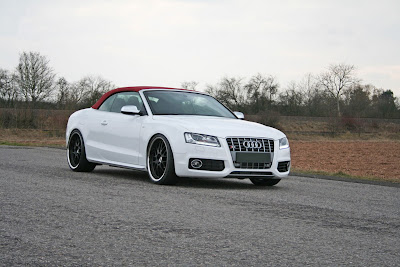 Audi S5 Cabrio-HS Motorsport
Audi S5 Cabrio-HS Motorsport Audi S5 Cabrio-HS Motorsport
Audi S5 Cabrio-HS Motorsport
Audi S5 Cabrio-HS Motorsport
Audi S5 Cabrio -HS Motorsport Review:An exhaust silencer from Cargraphic with four round inclined rolled-in 89 mm exhaust pipes announces soon arrival of the Audi S5 Cabrio like a post-horn did in its time. At the present moment, there is only one version assigned for export.
The customers fairly expect over and over again something extraordinary from the HS Motorsport company from Eching, located near Munich, the more so the perfection for a valuable client is the highest precept for Bavaria’s tuner.Strictly speaking, the external loo k of the cabriolet from Ingolstadt doesn’t need any upgrades. Therefore, the crew begins with the engine output increase which is not visible at first glance. This results in the fact that substantial 375 HP instead of standard 333 HP are now waiting for calling. The maximum torque shows 525 Nm in comparison to initial 440 Nm, which is now blasting the crankshaft without mercy. Increasing the limit of Vmax to the new value of 290 km/h is just a logical way at such performance.
Tested version for Germany:
Wheel disks at the front axle in 9x21 inch with 255/30ZR21 tyres and in 10,5x21 inch with 295/25ZR21 tyres at the rear axle are produced by Cargraphic also. Use of Bilstein thread suspension B16 PSS10 ensures perfect match of the wheel/tyre combination to the wheel housings.On demand – and at this performance absolutely advisable – a brake system from Brembo with double 380x32 mm brake disks and 6-piston monoblock saddle for the front axle can be installed. In conclusion, various carbon parts for the external cover and also for the interior should be mentioned.
Labels:
Audi,
Audi Autos,
Audi cars,
Audi dealership,
Audi latest model,
Audi latest news,
Audi lease,
Audi prices,
Audi S5,
Audi S5 Cabrio,
Audi S5 Cabrio-HS Motorsport,
HS Motorsport,
latest model cars,
new cars
RENM Audi R8 Enigma

RENM Audi R8 Enigma
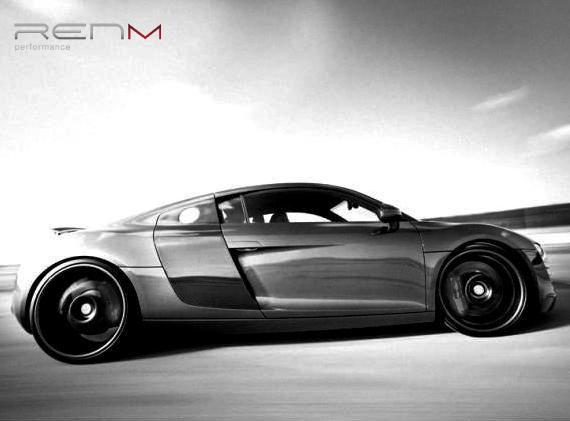
RENM Audi R8 Enigma

RENM Audi R8 Enigma
Renm Performance recently released a new styling and performance upgrade package for the Audi R8 Enigma. Featuring the Audi R8 V10, Renm Performance received the 2010 World Performance Car Award and released their upgrade package the same year. To get into the exterior visual upgrades, Renm’s performance fitted tuning their Audi R8 Enigma with various carbon fiber elements along with seamless integration. Also included in their upgrade package is a set of lightweight carbon fiber forged wheels, and a carbon front lip with optional rear diffuser.
RENM Performance, a car tuning company in Melbourne Australia, have created custom kits for the Audi R8 V8 and V10 models. The Audi R8 equipped with the 4.2 V8 engine got an increase of 39 horses and 26 lb-ft of torque over the stock model (the boosted model produces 454 horsepower and 343 lb-ft of torque). It also features an ECU recalibration, a carbon fibre air-intake and a performance exhaust.
The 5.2 V10 version develops 565 PS (415 KW) 560 NM with a simple ECU re-calibration alone. By adding high-flow sports air filters and performance exhaust system, peak-power for the 5.2 V10 increases to 600 PS (441 KW) 585 NM.
High-performance exhaust valves are operated via remote control, allowing the user to select between cruise, sport or open modes. The tuning program includes 20-inch light weight carbon fibre/forged wheels, carbon fibre/alacantra steering wheel and carbon fibre interior upgrades. A carbon fibre front lip and rear diffuser are optional extras.
A supercharger kit for the 4.2 V8 is available, and when combined with other engine upgrades, increases total output to an impressive 530 PS (390KW) 600NM. Uprated brakes, including 8-pot front and 6-pot rear calipers are fitted to accomodate the additional power. Other options include race suspension kits or race hydraulic lift systems.
Labels:
Audi,
Audi Autos,
Audi cars,
Audi dealership,
Audi Enigma,
Audi latest model,
Audi latest news,
Audi lease,
Audi prices,
Audi R8,
latest model cars,
new cars,
R8 Enigma,
RENM AUDI,
RENM Audi R8 Enigma
Audi Q7 3.0 TDI
 Audi Q7 3.0 TDI
Audi Q7 3.0 TDI
Audi Q7 3.0 TDI

Audi Q7 3.0 TDI
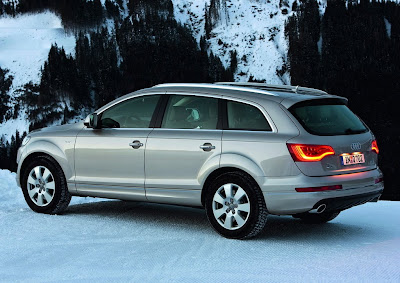 Audi Q7 3.0 TDI
Audi Q7 3.0 TDIAudi has added a new version to its 2011 Q7 line-up. The new Q7 3.0 TDI Quattro delivers a total of 204 HP and has a fuel consumption of 32.67 mpg. In Germany the new model is priced at 51,800 euros (around $72,000 at the current exchange rates).
Audi has added a new and especially efficient member to its Q7 family. The Q7 3.0 TDI offers 150 kW (204 hp) while consuming an average of just 7.2 liters of diesel per 100 km (32.67 miles per U.S. gallon) – better than all direct competitors. At the same time, a 3.0 liter V6 drives this large SUV powerfully and smoothly. An eight-speed tiptronic and quattro permanent all-wheel drive round out the luxurious drivetrain.
Highly efficient – the new Audi Q7 3.0 TDI quattro with 150 kW
* fuel efficiency of just 7.2 liters of diesel per 100 km
* eight-speed tiptronic and quattro drive
The Q7 3.0 TDI with 150 kW (204 hp) offers the same power transmission as all other models in this line. The new and efficient eight-speed tiptronic – with its high overall gear ratio – delivers torque to the quattro permanent all-wheel drive, which has a sporty rear-end bias. Double wishbones made of aluminum guide all four wheels; the chassis delivers great agility and stability. An off-road mode and a hill-descent assistant aid off-road driving.
With a wheelbase measuring 3.00 meters (9.84 feet) and an overall length of 5.09 meters (16.70 feet), the interior offers plenty of room. Audi offers the Q7 with five, six or seven seats. The luggage compartment offers as much as 2,035 liters of capacity (71.87 cubic ft). This new entry model's standard equipment package includes two-zone deluxe automatic air conditioning, a high-beam assistant, and an MMI radio multimedia interface.
Options include climate-controlled comfort seats, a panoramic glass sunroof, an electric tailgate, and a load-securing kit with rails for cargo. Sophisticated driver-assistance systems and a system of ultramodern infotainment modules round out the offer.
Friday, October 29, 2010
2011 Audi A1 e-tron
Audi is entering a new vehicle class. The compact A1 condenses all of the strengths of the brand – a progressive design, supreme quality and groundbreaking efficiency – into a space of measuring 3.95 meters (12.96 ft) in length. The new compact model bearing the four rings is dynamic and high-quality, emotion-packed and individual. Its powerful engines and the agile chassis make it the sportiest car in the segment.
Body and interior
One look is all it takes to see the sporty character of the A1. The design with the encircling shoulder line is cutting-edge and integrates the youngest Audi into the large model family. The front end with the dominating single-frame grille, the side line with the distinctive roof arch, the coupé-like C-pillars and the large wheel arches are among its defining style elements. The hood and the rear hatch wrap around the body. Audi offers optional xenon plus headlights with LED daytime running lights and LED taillights. These are already three-dimensionally styled in the base version and are unmistakable, day or night.
High- and ultra high-strength steels comprise two-thirds of the new compact model’s body. The strongest of these are the hot-shaped steels, which draw their extremely high tensile strength from a dramatic temperature increase during the shaping process. Hot-shaped steels are used primarily within the passenger cell. They provide the basis for the precise, sporty handling, the good comfort, the quiet interior, the excellent passive safety and the low base weight.
The interior of the A1 is spacious, bright and airy. The instrument panel resembles an airplane wing; its four round air vents are reminiscent of jet engines. The clean, clear controls are every bit a classic Audi strength as the superior workmanship. Many lovingly designed details underscore the premium character of the A1. In addition to the Attraction and Ambition trim lines, Audi also offers a media style package focused on infotainment and interior design. The on-board computer with efficiency program and shift indicator is among the standard features of the Ambition line.
Drivetrain
Audi is rolling out its new compact model with four four-cylinder engines: two TDI and two TFSI units. All of the engines follow the downsizing principle – they substitute turbocharging for displacement and draw their fuel through direct injection units. Their performance range extends from 63 kW (86 hp) to 90 kW (122 hp).
All versions of the A1 impress with exemplary fuel economy. Standard cycle values lie between 3.9 and 5.3 liters per 100 kilometers (44.38 - 60.31 US mpg). Scheduled for introduction in 2011, the 1.6 TDI with 66 kW (90 hp) and manual transmission emits only 99 g of CO2 per kilometer (159.33 g/mile). Efficiency modules that come standard with all versions are a start-stop system and a recuperation system. A new, particularly effective thermal management system in the engine contributes to the low fuel consumption of the 1.2 TFSI.
Engine lineup:
* 1.2 TFSI with 63 kW (86 hp)
* 1.4 TFSI with 92 kW (122 hp)
* 1.6 TDI with 66 kW (90 hp) (Launch date: 2011)
* 1.6 TDI with 77 kW (105 hp)
At Audi, efficiency always means high-tech. The A1 1.4 TFSI is available with the seven-speed S tronic dual-clutch transmission, which shifts extremely quickly, comfortably and with no perceptible interruption to the flow of power. It can be operated as an automatic or manually, with paddles on the steering wheel available as an option. Thanks to its high efficiency and the intelligent control system, the S tronic also helps to reduce fuel consumption.
Chassis
The agile, wide-track chassis moves the A1 to the head of its class. Whether in the city, on an interurban road or on the expressway – the newest Audi is always great fun to drive thanks to its sporty setup, the favorable weight distribution and the direct-ratio steering.
The ESP stabilization program with electronic limited slip differential, which comes standard on all models, makes the handling even more precise while also enhancing driving safety. It minimizes understeer at the cornering limit by means of slight braking, which also improves traction.
Equipment and trim
Innovative materials and modern colors emphasize the youthful character of the A1. Whether color-matched air vents, LED interior lights or seat covers in expressive colors – customization is the key. The equipment program offers countless opportunities for matching the A1 to the driver’s own personal style. There are even a variety of paint finishes from which to choose for the roof arch. Customers can also order many features after the initial sale to follow a trend or a whim.
The available infotainment and multimedia systems for the A1 come directly from the luxury class. The top of the line is MMI navigation plus, a media center that sets new standards in the compact segment. It borrows closely from the system used in Audi’s A8 flagship, including the monitor that folds out from the instrument panel and the control unit, which uses MMI logic.
The Connectivity package, which is based on the concert radio, includes a navigation preparation kit that allows the customer to later install a map-based navigation system – that, too, is a new idea. The 465 watt Bose surround sound system with 14 speakers is just one example of the additional high-end complementary features available. Convenient Bluetooth and wired interfaces are available for cellular phones and external players such as the iPod. The A1 has a base price in Germany of €15,800.
Audi S5 Typhon - SR AUTO Group

Audi S5 Typhon - SR AUTO Group
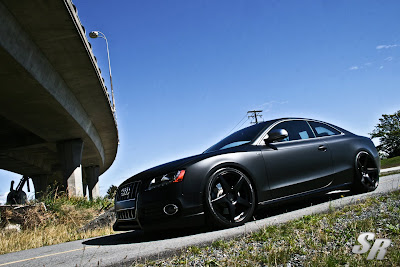 Audi S5 Typhon - SR AUTO Group
Audi S5 Typhon - SR AUTO Group
Audi S5 Typhon - SR AUTO Group

Audi S5 Typhon - SR AUTO Group
As you can see they opted in for the all-black look, with a Leios matte black body wrap, a few carbon fiber add-ons, like the front spoiler lip and the rear diffuser, 20 inch ebony black plus the conversion is complemented by the sports exhaust system that is another feature to further differentiate the Audi S5 Typhon by SR Auto Group from the stock version.
Spec:
Wheels
ADV1 5.1, Twenty Inch | Matte Black Finish
Exterior
Leios Matte Black Exterior Wrap
Reiger Front Lip
Reiger Roof Spoiler
Bepoke Dry Carbon Rear Diffusor
Suspension
H&R Coilover System
Performance
Milltek Sport Exhaust System
Milltek Downpipe
ECM Tuning
This is the Audi S5 Typhön, a former beauty queen turned Black Ops mission leader. Underneath the Leios matte black wrap are a tuned ECM; Milltek downpipe and sport exhaust; Reiger carbon fiber aero mods front and back; H&R coilover suspension and ADV 5.1 wheels in 20 inches of complementary matte ebony. If Bruce Wayne ever decides to go with something a little more subtle, this'd fit the bill. Have a look at the high-res gallery of photos below.
Labels:
Audi,
Audi dealership,
Audi Autos,
Audi cars,
Audi latest model,
Audi latest news,
Audi lease,
Audi prices,
Audi S5 Typhon,
Audi S5 Typhon - SR AUTO Group,
latest model cars,
new cars
Audi TT RS S Tronic
 Audi TT RS S Tronic
Audi TT RS S Tronic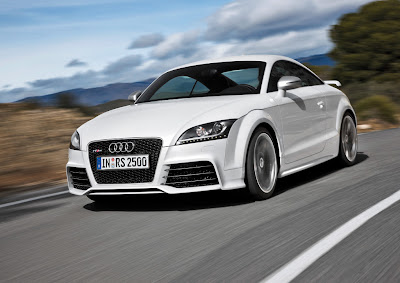 Audi TT RS S Tronic
Audi TT RS S Tronic Audi TT RS S Tronic
Audi TT RS S Tronic Audi TT RS S Tronic
Audi TT RS S Tronic Audi TT RS S Tronic
Audi TT RS S Tronic Audi TT RS S Tronic
Audi TT RS S Tronic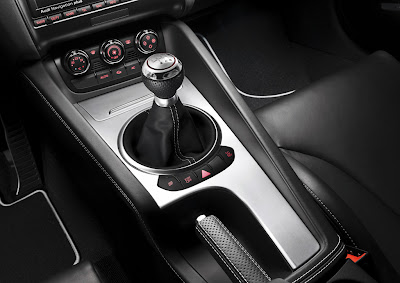
Audi TT RS S Tronic
Audi TT RS is powered by all wheel drive system quattro. The engine is a high-tech 2.5-liter five-cylinder TFSI, with the incredible power of 340 hp between 5,400 and 6,500 rpm and reaches a maximum torque of 450 Nm (331.90 lb-ft) between 1,600 and 5,300 rpm. For this power helps Audi core technologies of turbocharging and FSI direct injection.The Audi TT RS, the top-of-the-range TT model, can now also be ordered with a seven-speed dual-clutch transmission. This enables the purist driving machine, which was developed by quattro GmbH, to make quite an impression with lightning-fast gear changes and a level of efficiency that is pioneering in its class. The TT RS Coupe consumes an average of 8.5 liters (27.67 US mpg) of fuel per 100 km and emits just 197 g/km (317.04 g/mile) of CO2.
Designed for high efficiency at every speed: The seventh gear is configured as a high-geared overdrive which reduces engine speed, thus cutting fuel consumption. The driver can choose between two fully automatic modes and the manual mode in which he changes gear using the shift paddles on the steering wheel or with the selector lever. In addition, a launch control function offers virtually perfect acceleration from a standing start, with maximum turbo power and minimum wheel spin. This enables the TT RS with S tronic to accelerate even faster than with a manual transmission. The Coupe sprints from zero to 100 km/h (62.14 mph) in just 4.3 seconds. Top speed is governed electronically at 250 km/h (155.34 mph). This speed restriction can be removed as an option.
The unique 2.5-liter five-cylinder TFSI engine in the Audi TT RS received the “International Engine of the Year Award” in June 2010. Fitted with the Audi core technologies of turbocharging and FSI direct injection, this power pack delivers 250 kW (340 hp) between 5,400 and 6,500 rpm and reaches a maximum torque of 450 Nm (331.90 lb-ft) between 1,600 and 5,300 rpm. In conjunction with quattro permanent all-wheel drive and a high-performance chassis, the five-cylinder engine produces an outstanding road performance.
MTM Audi TT-RS
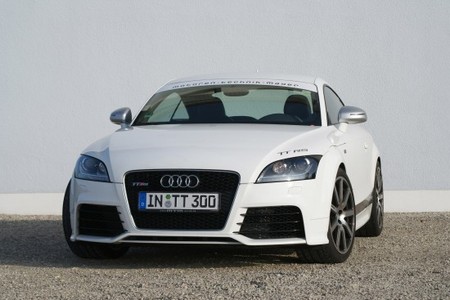
MTM Audi TT-RS
 MTM Audi TT-RS
MTM Audi TT-RS MTM Audi TT-RS
MTM Audi TT-RS MTM Audi TT-RS
MTM Audi TT-RS•Audi tuner MTM drives 312 km/h with the TTRS in Nardo
•Sophisticated technique to ensure best driving values
•Complete package including wheels and brakes
How much engine performance do you need to break 300 km/h? The ones who think that this needs more than 500 bhp will learn that this is not correct. The TTRS with 472 bhp by MTM from Wettstetten / Ingolstadt was GPS measured to be 312 km/h at test runs on the Nardo highspeed track in Italy at the beginning of September 2010. For many other tuners a hard nut to crack despite of increased efficiency.
The MTM TTRS with 472 bhp doesn't has to fear the competition of other tuners, who are still fighting with 300 km/h and can't reduce 0-100 km/h time under 4.0 seconds despite a plus of 30 bhp.
MTM is one of the leading and at the same time the fastest of all Audi tuner worldwide. Within the last years engineers from Wettstetten showed best values: MTM RS6 R with a top speed of 344,2 km/h is the fastest station wagon in the world. A MTM customer drove this record in Nardo in 2009. Moreover the fastest Bentley GPS measured 331 km/h in 2008 is from Roland Mayers workshop.
The TT Bimoto with two engines set as well a new record by driving 393,6 km/h in Papenburg in 2007. Today the Bimoto is still holding the track record for street-legal cars in Nardo driven by Florian Gruber. Nardo test drives under extreme conditions are an important part of MTM development work. Outside temperature was temporary at 35 degrees celsius.
Wheelsandmore Audi R8 V10
 Wheelsandmore Audi R8 V10
Wheelsandmore Audi R8 V10
Wheelsandmore Audi R8 V10
 Wheelsandmore Audi R8 V10
Wheelsandmore Audi R8 V10 Wheelsandmore Audi R8 V10
Wheelsandmore Audi R8 V10This time around, the German tuner have produced a package for the V10 model boosting power, a new suspension kit and a fresh set of alloys. It’s quite an understated package but we think it’s definitely worth a look.The Audi R8 V10 is simply spectacular, but after what we saw Wheelsandmore do with the V8 powered R8, we were absolutely ecstatic to see that they had decided to try their hand at the R8 V10. Already a powerful vehicle with 525hp, Wheelsandmore took this sports car to a completely different and exclusive level.
To increase serial power of the V10 engine they handcrafted a special stainless steel, valve controlled exhaust system, combined with an ECU upgrade obtaining enormous 600 hp and 590 lb of torque.
Wheelsandmore achieved even more agility by installing their new 3-piece wheels, available with unlimited colour and surface combinations. For the perfect visual appearance and handling they customized their “C-Sport“ model sizing 9,0×20“ with Continental Sport Contact III tyres 235/30/20 in the front and a 11,0×20“ with 295/25/20” tyres in the rear.
To lent the german sportscar a sportier performance, combined with more aggressive occurrence, the tuner adapted a KW race established special coilover with adjustable rebound and compression, hydraulically liftable around 1.77 inch.
To increase serial power of the V10 engine they handcrafted a special stainless steel, valve controlled exhaust system, combined with an ECU upgrade obtaining enormous 600 hp and 590 lb of torque.
Wheelsandmore achieved even more agility by installing their new 3-piece wheels, available with unlimited colour and surface combinations. For the perfect visual appearance and handling they customized their “C-Sport“ model sizing 9,0×20“ with Continental Sport Contact III tyres 235/30/20 in the front and a 11,0×20“ with 295/25/20” tyres in the rear.
To lent the german sportscar a sportier performance, combined with more aggressive occurrence, the tuner adapted a KW race established special coilover with adjustable rebound and compression, hydraulically liftable around 1.77 inch.
Labels:
Audi,
Audi dealership,
Audi Autos,
Audi cars,
Audi latest model,
Audi latest news,
Audi lease,
Audi prices,
latest model cars,
new cars,
Wheelsandmore Audi,
Wheelsandmore Audi R8 V10
Raeder Audi TT RS Race
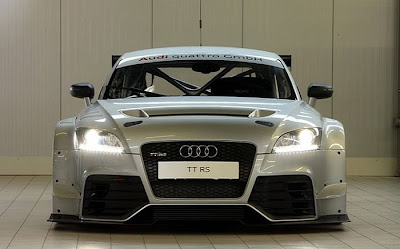 Raeder Audi TT RS Race
Raeder Audi TT RS Race  Raeder Audi TT RS Race
Raeder Audi TT RS Race 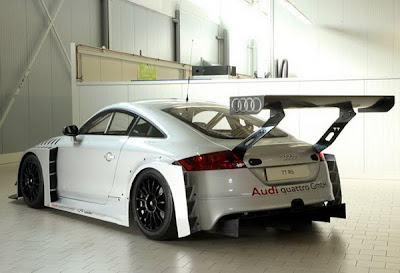 Raeder Audi TT RS Race
Raeder Audi TT RS Race Audi has teamed with Raeder Motorsports and will run the car during the last two rounds of the Endurance Championship, held at the Nürburgring. The production version of the Audi TT RS is a blast to drive, so we can only imagine the thrills the competition-spec car provides.
The TT RS DTM-racer was developed jointly by Quattro GmbH, Audi's Technical Development unit and Raeder Motorsport. It comes with a 2.5 liter, turbocharged 5-cylinder engine fitted with components from the Audi R8 LMS (LeMans Series).
Raeder Motorsport already races an Audi A1 and a TT in the VLN Championship. The TT RS will be running in the SP 4T class at the Endurance Championship at the Nürburgring on October 16 and 30. The car will be driven by Marc Hennerici and Christopher Mies.
Labels:
Audi,
Audi dealership,
Audi Autos,
Audi cars,
Audi latest model,
Audi latest news,
Audi lease,
Audi prices,
Audi sports cars,
latest model cars,
new cars,
Raeder Audi TT RS Race,
sports car
Audi Q5 Hybrid
Audi has just confirmed that a hybrid version of the Q5 SUV will be revealed at the Los Angeles Auto Show this November. The new version will be offered to both Europe and America.
We already know that the Q5 will carry the same hybrid powertrain found in the Porsche Cayenne and Volkswagen Touareg, but we are curious to see what else Audi has planned for the SUV.
The Cayenne Hybrid is powered by a 47 hp electric motor combined to a 333 hp compressor engine. The two drive units deliver a total of 380 HP and peak torque of 427 lb-ft at just 1,000 rpm. However, for the Q5 Hybrid, we expect a 211 HP four-cylinder 2.0 TFSI engine combined with a 45 hp electric motor which would make it the first compact SUV on the market to utilize a hybrid powertrain.
2010 The Zenvo ST1
Great Danes are know for their presence and power – and this one is no exception. Known as the Zenvo ST-1, it’s Denmark’s first foray into the super car arena.The aggresive body is hand-built from carbon fibre wrapped around a light steel frame – but its performance should be even more eye-popping. Powered by a 7.0-litre V8 fitted with both a turbo and supercharger, its makers claim it will produce a staggering 1,104bhp.The ST-1 will achieve a 0-60mph sprint time of three seconds and rocket all the way to 120mph in just under nine seconds. But it might not quite be the Bugatti beater, as despite a huge power-to-weight ratio of 1,055bhp per ton, top speed is limited electronically to 233mph. Just as impressive is the fact that the car was conceived less than five years ago. Zenvo Automotive was formed in 2004, with the aim of creating a hand-made and high-performance yet use able super car – so the ST-1 should make as much sense on the street as it does on the track. The Nissan GT-R-meets-Audi R8 styling is sure to win the car a place on many bedroom walls, but prospective buyers will have to be quick. Production is scheduled to start later in 2009, but just 15 models will be made for specially approved buyers. Prices have not yet been announced. For more details click here.
2010 SpeedArt BTR II 580
BTR II 580 is the tuned and modified version of the new Porsche 997 Turbo 3,8l with PDK-gearbox: The SpeedART BTR-II 650 EVO (Bi-Turbo-Racer, 2. generation with 650 hp and Evolution-body kit). It is based on Porsche 997 Turbo with 3,8l engine and PDK shiftbox. The power increase of 150 hp and 150 nm consits of a modified motronic to enlarged the power boost in combination with bigger VTG-turbo chargers, a sport exhaust with sport cats and twin tail pipes plus sport headers/manifolds, sport air filter and enlarged intercoolers. The sport exhaust is available with sound control switch, too.
Body Kit
The body kit "2010 SpeedArt BTR II 580" consists of an new designed front bumer with spoiler lip and gun-metal frames for more downforce and better brake cooling (EVO-version), side skirts, rear diffuser and a rear spoiler with movable rear wing. The rear wing is available in car colour or original carbon.
Wednesday, October 27, 2010
Eisenmann Audi R8
 Eisenmann Audi R8
Eisenmann Audi R8 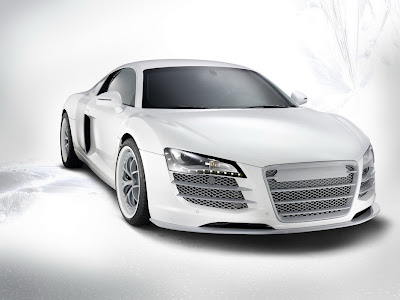 Eisenmann Audi R8
Eisenmann Audi R8  Eisenmann Audi R8
Eisenmann Audi R8 It goes without saying that exhaust systems are the domain of Eisenmann. The Spark Eight by Eisenmann is fitted with a performance stainless steal system, with a gigantic tailpipe exit in the center of the rear spoiler (4600 Euro). This warrants a one-of-a-kind visual effect. Thanks to the flap control system, sound and optimal performance can be controlled with the push of a button. As an alternative Eisenmann offers an exhaust system with four stainless steel tailpipes (3800 Euro) that can be combined with the standard rear spoiler. The retro-classic intake funnel (1200 Euro) and the two oval tailpipes (1000 Euro) provide the look of the R10.
Eisenmann also ensures that the improved chassis matches the upgrade of visual effect and sound. The new shock absorbers with four performance springs (3850 Euro) increase the driving dynamic for even more agile handling characteristics. The 235/35 (front) and 315/30 (rear) tyres mounted on 8.5x19 inch alloy wheels ensure a solid grip (complete set available for 7300 Euro).
For the Spark Eight by Eisenmann, visual appearance, sound and performance enter into a perfect symbiosis. All of the above is based on experience Eisenmann has amassed in motoring. Many years of research and development for racetracks and motorways alike have merged into an unrivaled project.
500 ferrari 458 italia camuflaje
Take the money and the wisdom of buying a prancing horse does not seem to exclude some of its eccentricities owners improper elegance of a machine like the new Ferrari 458 Italy. Definitely not normal to find a Ferrari decorated with snowy camouflage.
The owner of this Ferrari 458 Italy might be thought his brand new Italian sports pass unnoticed through the city traffic and decided that the best way to “twisting necks” wherever he happens to wear it would be this way.
Subscribe to:
Posts (Atom)


